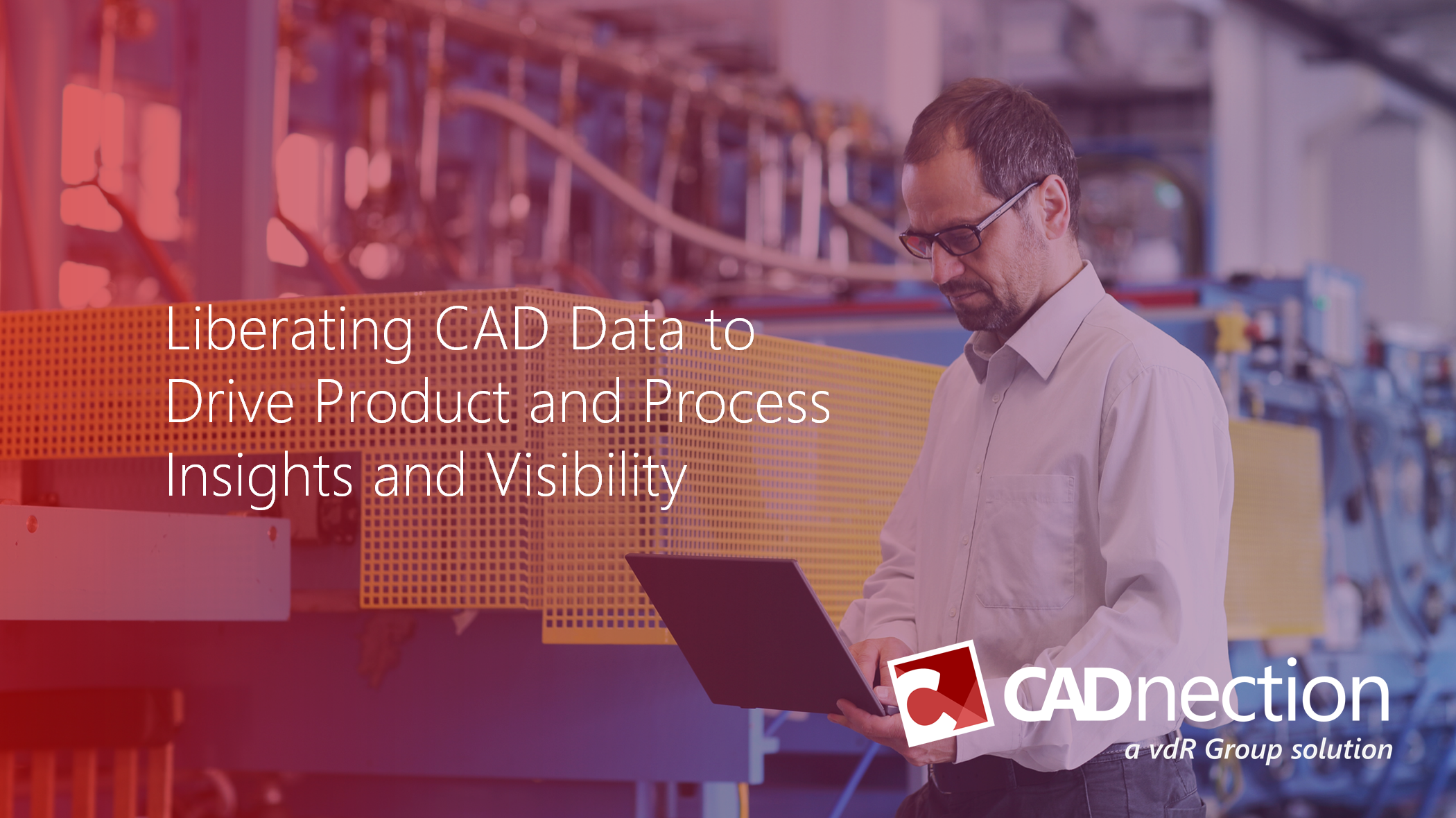Liberating CAD Data to Drive Insights and Visibility
/CAD models possess a richness of data reflecting intellectual property, design intent, spatial modeling, quality parameters, analysis and instructions for applications such as engineering, product development, processes/operations and construction. Most anything that is manufactured and/or built today is characterized via CAD models.
While finding the rich data inside CAD models is a challenge, file folder structures can help. Product data/product lifecycle management (PDM/PLM) solutions can further extend this structure by adding metadata or properties. But the reality is that all this data is simply consigned to a handful of properties and design insights are lost, at worst, and hard to find, at best.
What if all this data could be liberated? Searched for. Found. Structures highlighted. Relationships illuminated. 3D models visualized. The original authoring tool is not needed. That’s what vdR Group is developing.
vdR Group has partnered with Lucidworks to solve this CAD liberation problem. The folks that founded Lucidworks are the same folks that pioneered the original Lucene/SOLR open source search technologies. Lucidworks has taken this opensource stack to a whole new level with their Fusion Platform that provides a complete suite of functionality allowing users to find data and insights from files and data management repositories previously inaccessible to traditional search and data analysis solutions. The platform also comes with the App Studio, a configurable UI/UX solutions to insure insights and results are contextualized for each user across all devices … including mobile.
vdR’s partnership with Lucidworks is focused on extending the power of the Fusion Platform to meet the needs of engineering, manufacturing, and AEC (architecture, engineering, and construction) organizations. This solution is called, CADnection.
By extending the reach of Lucidworks, users will now be able to get immediate access to CAD models, its meta data/properties, manufacturing/quality details, geometrics dimensions, structure and bill-of-material (BOMs), where-used and composed-of relationships, and connectivity to other media such as 3D and 2D visualization capabilities. And all this is accomplished without needing the original authoring tool or proprietary viewing solutions.
However, as we all know, data is only as valuable as the user’s ability to interact with it to find answers and actionable insights. This is where Lucidworks AI powered search technology really shines. This allows for the dynamic creation of engineering and manufacturing specific search facets, relevancy in the results, real-time where-users relationships, analytics and insights, and much more.
To make this more concrete, let’s look at one example of how these AI powered insights can work with CADnection. CADnection can enable graphical navigation within piping and instrumentation diagrams (P&IDs) by dynamically hyperlinking instruments and equipment to other data sources such as data sheets, vendor information, last date of maintenance, etc. In effect, gleaning all relevant contextual data without the need to rely on folder structure, manually tagging, or outdated documentation.
In addition to significant search and insight capabilities, Lucidworks has connector technology that reaches into over 300 file formats and 75 applications such as Access, Salesforce, SharePoint, and others. Hence, the so-called “mash-up” opportunities are significant. The platform truly provides a unified search experience that can make the disparate file folder structures, formats and siloed applications look like a single source of data.
CADnection is being introduced at the upcoming Lucidworks Activate conference, being held September 9 - 12, in Washington D.C. We are a sponsor of the event. Over 1000 users will be in attendance.



